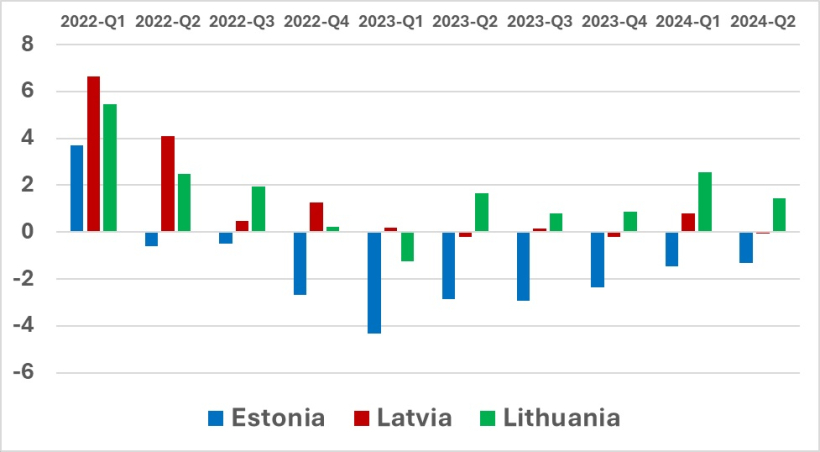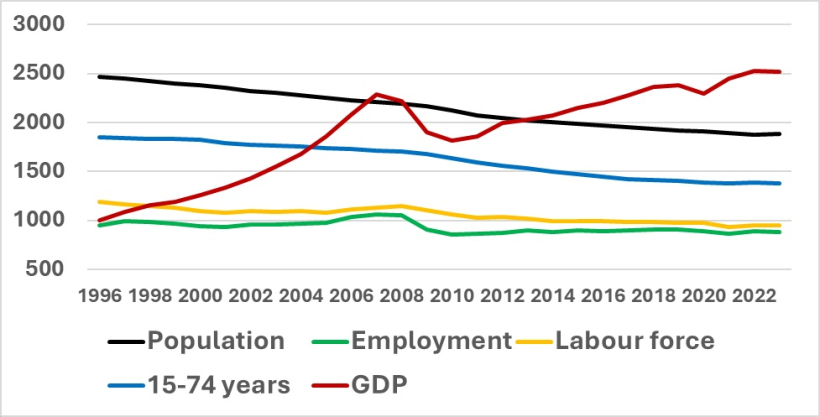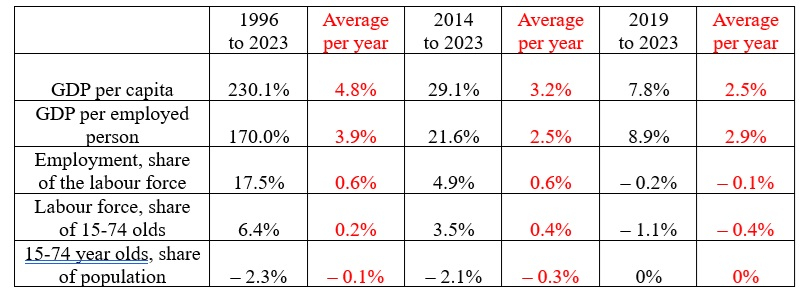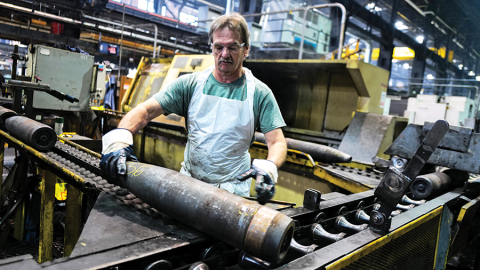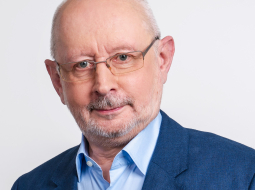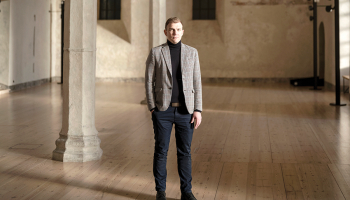
Ilustratīvs attēls no Pixabay.com
The Latvian economy is currently best described at being at a standstill, which should be clear from Figure 1. Actually, not a very bad outcome given recession in some trading partner countries (e.g. Estonia, see again Figure 1) as well as geopolitically dark skies. It could be worse…
But what about future growth? To analyze this, I will first take a look at the past (!).
Figure 1: Economic growth in the Baltic economies, 2022 Q1 – 2024 – Q2
Source: Eurostat
Figure 2 (and I admit that in terms of visibility it is not the most impressive chart) shows what we are quite familiar with: Due to demographics and migration, Latvia’s population is and has been declining for years and so is the labour force as well as employment – but GDP has grown some 150% in constant prices since the mid-1990s when reliable data started being available. Absolutely not bad at all but where did this growth come from?
Figure 2: Latvian population, employment, labour force, 15-74 year old persons (all in 1000s of persons) plus a GDP index in constant prices starting at 1000 in 1996
Source: Statistics Portal of Latvia and own calculations
I can apply a bit of mathematics and derive the following:
This gives me the development in GDP per capita (a good measure for income per person) as a combination of four parts where the first, GDP per employed person, is what we would call productivity.
In columns 2 and 3 in Table 1 below I show the development in GDP per capita from 1996 until today (well, 2023) as well as the development of the four sub-components.
GDP per capita is up by a staggering 230% since 1996 (in the EU, only Lithuania has had a better performance). It is more than the 150% from Figure 2 due to the simple fact that we are fewer “capita” to share this growth – the result of the declining population.
By far most of this growth – 170% – comes from productivity increases. Nothing strange here – productivity is what drives the economy in the long run but it can also be seen that a significant contribution has come from employment’s increasing share of the labour force, a reflection of a much lower unemployment rate than in 1996, and there has also been a contribution from the labour force being a bigger share of the 15-74 year old, the relevant group for contributions of basically all employed people.
Table 1: Growth decomposition for Latvia, 1996 – 2023, 2014 – 2023, 2019 – 2023
Source: Statistics Portal of Latvia and own calculations
Columns 4 and 5 provide similar results but for the past ten years. Growth rates for GDP per capita and productivity are lower than for 1996 – 2023, very much consistent with economic theory where growth rates are typically higher the poorer countries are – at first such countries “pick the low-hanging fruit”; later growth becomes more complicated.
Columns 6 and 7 are for a very short period, 2019 – 2023, marked by Covid and Russia’s invasion of Ukraine – but the results I would like to emphasize here are not so much about GDP or productivity. It is the last three rows and what they say about the future. Employment as a share of the labour force is hard to push up any further – this is due to the unemployment rate being at close to historical lows. The labour force as a share of the 15-74 year olds also provides negative contributions to growth now (those who are 65-74 year old are, and understandably so, not so prevalent in the labour force but they are quite big groups these days as the younger cohorts of people are smaller, again due to population decline.
And it won’t be long – demographers will know better than I – before the last row starts making negative contributions. This is often but not so politely referred to as the “demographic burden” – a bigger and bigger share of old and retired persons, once again a result of the declining population.
In conclusion, future growth of the Latvian economy hinges on productivity growth and productivity growth alone. As mentioned earlier, this is not surprising; it is after all how economies grow in the long run, but I hope the numbers provided help make this very clear. And that productivity growth therefore must be a top priority – the single most important priority – for economic development of Latvia.
And the quest for productivity growth therefore has to be better and especially more realistic than in this report.
A final comment: Oļegs Krasnopjorovs, economist at Bank of Latvia has a great paper analyzing where more labour could potentially be found in Latvia. But it is a rocky road from “potentially possible” to “actually happening”, of course. But worth looking at for policy makers. But it does not change the conclusion that productivity is the single, over-arching priority.
Morten Hansen is Head of Economics Department at Stockholm School of Economics in Riga and former Vice-Chairman at the Fiscal Discipline Council of Latvia
